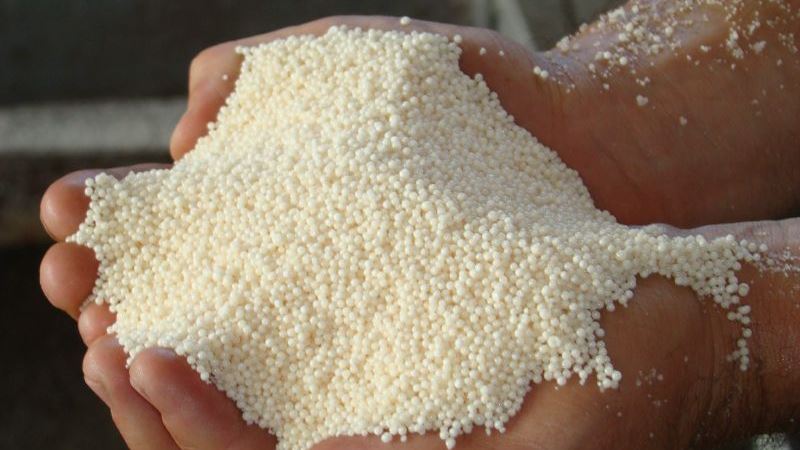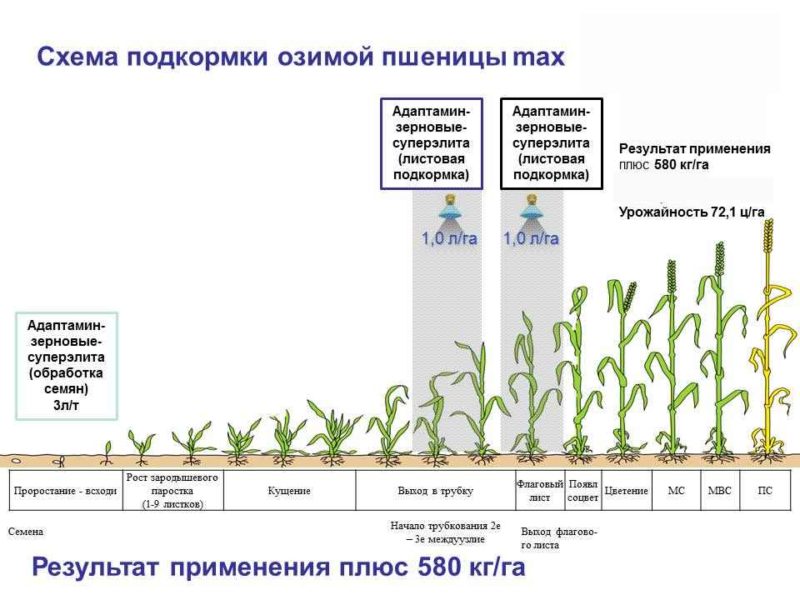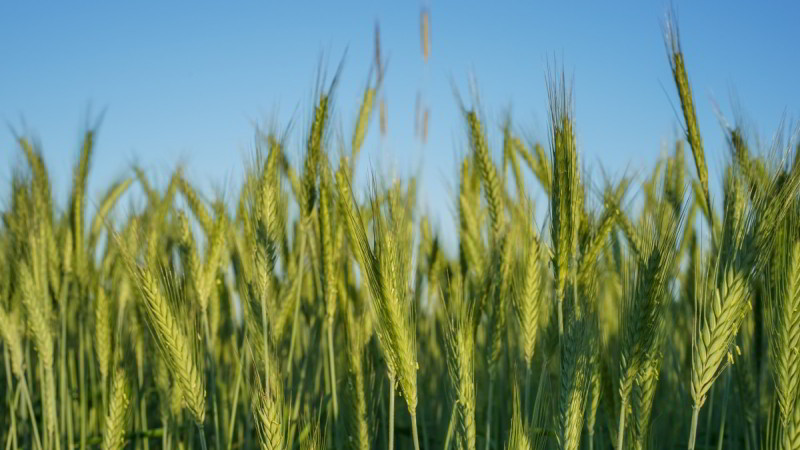What is the effect of nitrate on wheat and how is it used for fertilization
Ammonium nitrate in agriculture is used as a top dressing. Its main element is nitrogen, which is needed by almost all agricultural crops, including wheat. Top dressing with nitrate has a beneficial effect on the growth of the vegetative mass of the plant, an increase in the amount of protein and the content of gluten. Read about all aspects of the effect of the substance on wheat and its use in growing cereals in the article.
The content of the article
What is saltpeter
Ammonium nitrate is a fertilizer belonging to the class of mineral substances obtained by neutralizing nitric acid with ammonia... When it hits the surface of the soil, top dressing decomposes quickly, releasing nitrogen in it in large quantities.
Other names for ammonium nitrate are ammonium nitrate, ammonium nitrate and ammonium salt of nitric acid.

Composition and properties
Fertilizer is produced in the form of powder or granules of white color with a slight yellowish tinge... To create nitrate, nitric acid concentrate and ammonia are used. The chemical formula of ammonium nitrate is NH4NO3.
Very often sulfur is added to the dressing with saltpeter. It is not included in the chemical formula of the substance, but only helps to better assimilate nitrogen.
Ammonium nitrate is an ideal top dressing during wheat growth. In spring, plants are capable of absorbing large amounts of nitrogen.
Saltpeter is an acidic fertilizer. Soil with a normal pH will not acidify from it. But in acidic soils, it is necessary to additionally add calcium carbonate (aka calcium carbonate), lime flour.
On alkaline or buffer soils, the agrochemical is applied in its pure form.
Ammonium nitrate has a neutral reaction, thereby creating ideal conditions for nitrogen supply in the zone of its introduction, where the bulk of the plant roots is located.
Calcium ammonium nitrate contains calcium and magnesium carbonates, which are responsible for increasing the efficiency of feeding not only on acidic, but also on alkaline soils, as well as on soils of light granulometric composition (sandy, sandy loam) and saline. Positive results can be seen after adding calcium-ammonium nitrate to the soil with a magnesium deficiency. Regular application of this top dressing does not lead to soil acidification.
Important! To feed winter wheat, it is necessary to add saltpeter with phosphorus and potassium - this will significantly increase the yield of the crop.
Effect of nitrate on wheat

Ammonium nitrate can be used on all types of soils and under all agricultural crops, including grain crops.
For winter
Ammonium nitrate can act as the main fertilizer or top dressing during the growing season.
On soils prone to oxidation, its use in winter wheat crops reduces the negative effect of acid fertilization.
Reference. Ammonium nitrate does not cake during long storage periods.
On spring
The main part of saltpeter is necessary for spring wheat during flowering, tube-laying, earing. Nitrogen fertilizers should be applied in cold plowing and during spring sowing in rows.
Is it necessary to feed wheat with saltpeter in spring, summer and autumn

It is better to do top dressing for plowed wheat. Afterwards, it is recommended to carry out root and foliar dressing on all types of soil.
Top dressing of spring and winter wheat is produced in autumn. For the first, ammonium nitrate is laid in late October or early November. For the second, nutrients are applied in late August and early September.
Important! If the autumn feeding for spring wheat has not been done, it must be done in the spring, with the onset of the first heat.
When to fertilize wheat with nitrate
Ammonium nitrate is one of the safest types of fertilizers. But a good harvest and preservation of the fertile properties of the topsoil can only be guaranteed if the timing and rules of feeding are observed.
Terms of top dressing
It is most effective to apply fertilizer with a high dose once before sowing.
Fertilization technology
The method of using the agrochemical is simple. It is introduced into the soil layer, where the bulk of the roots is located.
For cereals, ammonium nitrate is introduced into pre-sowing cultivation. In the spring, after the restoration of vegetation, top dressing is carried out on frozen soil.
After carrying out soil diagnostics, if necessary, fertilizing with calcium-ammonium nitrate is carried out by the root method in the tillering phase.
It is interesting:
Why is potassium nitrate useful for cucumbers during fruiting?
What is good about nitrogen fertilization of winter wheat and how it is applied.
Dosage
The rate for feeding 1 hectare of soil:
- 200-350 kg of ammonium nitrate in the fall for winter wheat;
- 200-300 kg in spring for spring wheat.
What other substances does wheat need?
In addition to nitrogen, cereals need to be fed with other nutrients: phosphorus, potassium, calcium, magnesium and sulfur. The choice of substances depends on the type and condition of the soil.
Symptoms of their lack:
- Phosphorus deficiency can be detected on wheat by external signs. If the leaf turns reddish-purple, it means that the plant lacks phosphorus.
- Lack of potassium - necrosis of old leaves, marginal chlorosis.
- The need for calcium is yellowing and deformation of young leaves.
- With a lack of magnesium, small yellow spots appear on the leaves.
- With a sulfur deficiency in cereals, the leaves turn yellow.
- Insufficient chlorine - leaf spot.
- Interveinal chlorosis is a sign of iron deficiency.
- With a copper deficiency, the tops of young leaves wither, curl, die off.
- With a lack of zinc, yellow and brown necrotic spots appear in wheat, which quickly increase in size towards the top and bottom of the leaf.
- Wheat needs nitrogen throughout the growing season. But too much of it can be bad for the culture. The correct dosage and regimen will help grow a healthy and robust plant.
Read also:
Fertilizers for winter wheat: how to feed in the fall
Conclusion
Ammonium nitrate is a simple and cheap mineral fertilizer. In agriculture, it is used for all crops with small nuances, if observed, it is possible to significantly increase yields.